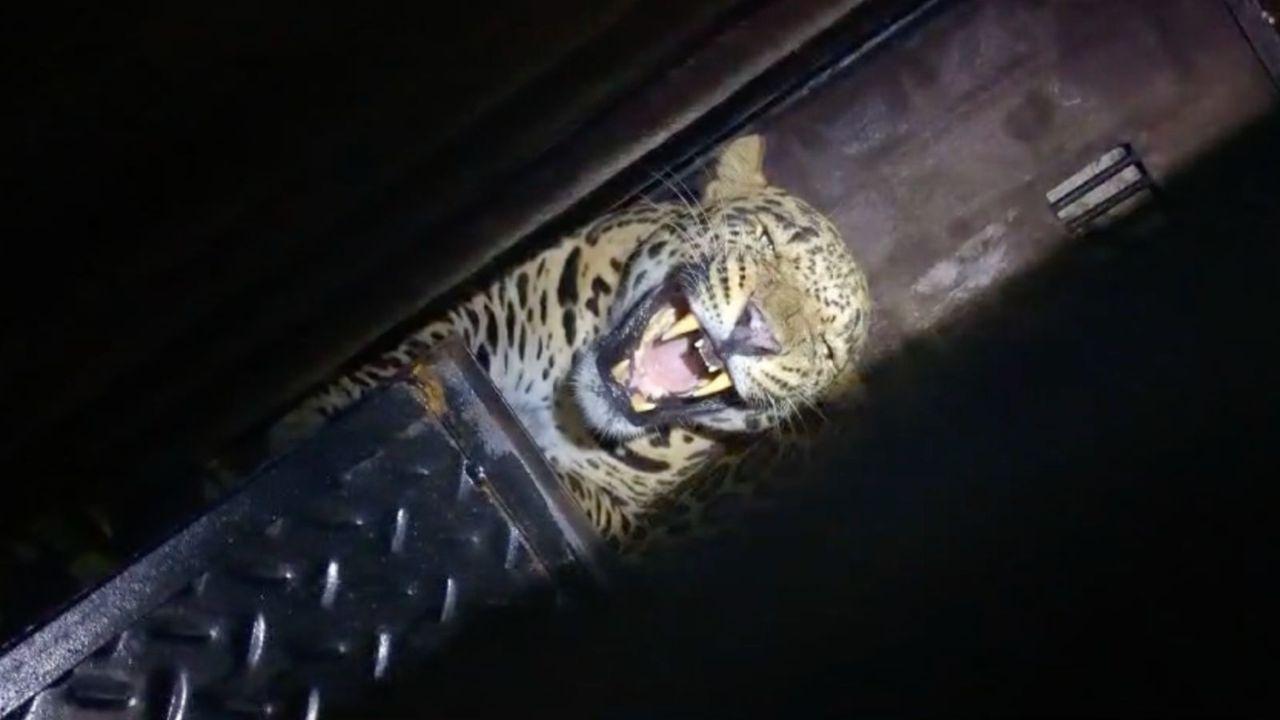Home / Mumbai / Mumbai News / Article /
Mumbai: Alas, leopard roaming in Vasai has been captured
Updated On: 23 April, 2024 10:50 AM IST | Mumbai | Diwakar Sharma
The leopard in Vasai was caught due to joint efforts of the Maharashtra Forest Department, wildlife NGOs and researchers in the wee hours of Tuesday.

Leopard roaming in Vasai was captured after 25-day search operation/ Hanif Patel
The male leopard, which was first sighted at the remains of an Indo-Portuguese fort on March 29 in Vasai and triggered panic among residents, has been caught by the joint efforts of the Maharashtra Forest department, wildlife NGOs and researchers in the wee hours of Tuesday.
The officials had installed multiple trap cameras to monitor the movement of the leopard, which initially survived on the stray dogs but, later, it is believed that the big cat was surviving on rodents that are found abundant in the fort.




